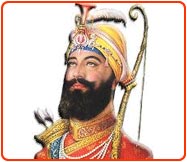Baisakhi Festival - It's history and importance:
Significance of Baisakhi
Astrological Significance of Baisakhi
The festival of Baisakhi falls on April 13 every year and April 14 once in every 36 years. Change in date is because of the fact that date of Baisakhi is reckoned according to the solar calendar. Astrologically, the date of Baisakhi is significant as marks sun’s entry into Mesh Rashi. For this very reason, many people also know Baisakhi as Mesha Sankranti. The auspicious date of Baisakhi is celebrated all over India under different names and rituals. It is celebrated as 'Rongali Bihu' in Assam, 'Naba Barsha' in Bengal, ‘Puthandu’ in Tamil Nadu, 'Pooram Vishu' in Kerala and ‘Vaishakha’ in the state of Bihar.
Significance of Baisakhi for Farmers
For the agriculturally rich state of Punjab and Haryana, Baisakhi marks the time for harvest of Rabi (winter) crops and is therefore extremely significant for the farmers. Baisakhi Festival is also celebrated as a Thanksgiving Day festival in these states. After waking up early and dressing themselves in new clothes, farmers visit temples and gurdwaras to express gratitude to God for the good harvest and seek blessing for ensuing agriculture season. Farmers also celebrate Baisakhi by performing energetic bhangra and gidda dance and participating in Baisakhi Fairs.
Significance of Baisakhi in Sikhism
Baisakhi is of major importance for the people following Sikh faith. As it was on a Baisakhi Day, in the year 1699 that the Tenth Guru of Sikhs, Guru Gobind Singh founded Khalsa Panth or the Order of Pure Ones and gave a unique identity to Sikhs. On the same day the guru administered amrit (nectar) to his first batch of five disciples making them Singhs, a martial community. By doing so, he eliminated the differences of high and low and established that all human beings were equal.
Sikhs celebrate Baisakhi by participating in special prayer meetings organized at gurdwaras. They also carry out joyful Baisakhi processions to mark the day.
Significance of Baisakhi in Other Religions
The day of Baisakhi is of significance for the Hindus as it was on this day in 1875 that Swami Dayanand Saraswati founded the Arya Samaj - a reformed sect of Hindus who are devoted to the Vedas for spiritual guidance and have discarded idol worship. Besides, Baisakhi day is of relevance for the Buddhists as Gautama Buddha attained enlightenment and Nirvana on this auspiciousBaisakhi
History of Baisakhi
Story of Baisakhi
The story of Baisakhi Festival began with the martyrdom of Guru Teg Bahadur, the ninth Sikh Guru who was publicly beheaded by the Aurungzeb, the Mughal ruler. Aurungzeb wanted to spread Islam in India and Guru Tegh Bahadur stood up for the rights of Hindus and Sikhs and the Mughals therefore saw him as a threat.
After the death of Guru Teg Bahadur, his son, Guru Gobind Singh became the next Guru of the Sikhs. Guru Gobind Singh wished to instill courage and strength to sacrifice among his fellow men. To fulfil his dream, Guru Gobind Singh called on the historic Baisakhi Day congregation of Sikhs at Keshgarh Sahib near Anandpur on March 30, 1699.
When thousands of people assembled for Guru’s blessing, Guru Gobind Singh came out of the tent carrying an unsheathed sword. He gave a powerful speech to infuse courage amongst fellowmen. At the end of the speech he said that every great deed was preceded by equally great sacrifice and demanded that anyone prepared to give his life come forward. On the Guru’s third call, a young man offered himself. The Guru took the man inside a tent and reappeared alone with a bloodied sword. Guru Gobind Singh asked for another volunteer. This was repeated another four times until a total of five Sikhs had gone into the tent with the Guru. Everyone present was worried and though that Guru Gobind Singh has killed five Sikhs. At this point Guru presented all the five men before the people. Every one present was surprised to see all five men alive and wearing turbans and saffron-coloured garments.
These five men were called Panj Piara or 'Beloved Five' by the Guru. The Guru blessed them with aPahul ceremony. In an iron vessel, the Guru stirred with a sword called Khanda Sahib, the batasha that his wife, Mata Sundari Ji had put into water. The congregation recited verses from scriptures as the Guru performed the sacred ceremony. The water was now considered the sacred nectar of immortality called amrit. It was first given to the five volunteers, then drunk by the guru and later distributed amongst the crowd. With this ceremony, all those present, irrespective of caste or creed, became members of the Khalsa Pantha (the Order of the Pure Ones).
 |
Guru Gobind Singh also bestowed on Khalsa, the unique Sikh identity. He directed Sikhs to wear five K's: Kesh or long hair, Kangha or comb, Kripan or dagger, Kachha or shorts and a Kara or bracelet. Guru Gobind Singh also discontinued the tradition of Gurus and asked all Sikhs to accept the Grantha Sahib as their eternal guide. He urged them to come to him with their hair and beard unshorn to get baptized by the sword.






No comments:
Post a Comment